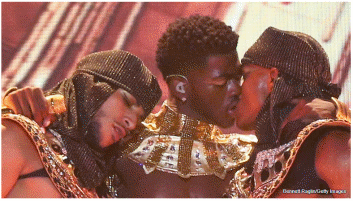General Information
Name:
Title of the study: Hidden Things and Ideas behind Hyper-masculinity in Hip Hop.
Sociological Research Question: What lies behind the dominant hyper-masculine paradigm in Hip Hop and Black culture and its various manifestations in lyrics and music videos?
Abstract
Nobody would deny that hyper-masculinity is present in Hip Hop and manifests itself brightly in the music industry. The central objective of this short paper was to find out, identify and explain what things and concepts this cultural phenomenon contains. Societal ideas that form hyper-masculinity turned out to be Black masculinity, financial success and attractiveness, and homophobia. Interestingly, a massive paradigm conversion occurs in Hip Hop culture nowadays. This content analysis provides a sociological insight into the massively changing music subculture and the Black community.
Rationale & Research
Being created, cultivated, developed, and popularized mainly by marginalized Black men, now mass consumers of the entertainment industry strongly associate Hip Hop with masculinity and hyper-masculinity specifically. It is a rather strange situation considering that other musical genres remain gender-neutral in the media, at least on the surface. The question arises as to what serves as an inspiring driver for such a bright and clear gender image of Hip Hop. Another intriguing one is what future hypothetical findings might say about the Black community’s current social trends and conditions.
Despite being minimalist in the melody, Hip Hop is still a very expressive music genre due to the combination of emotional lyrics and sensual rhythm. I believe it was this musical uniqueness and paradoxicality, as well as the depiction of marginalized and oppressed communities in many Hip Hop lyrics, are the things that attracted me to this music style long ago. I cannot say precisely when I started listening to Hip Hop and many of its sub-genres, but I am sure it was in my early teen years. While writing this qualitative analytical paper, I now realize that Hip Hop developed my social and cultural awareness and drove me into the social sciences.
Source 1-title: Homosex, Hermaph, or Trans-a-vest… Hate Fags? The Answer’s Yes”: Hypermasculinity in America and Commodified Homophobia Through the Lens Of Hip Hop.
In this research paper, Annalisa Ciro explores Hip Hop, its cultural influences, and the behavioral patterns it cultivates in its listeners. For example, one of her most interesting implications is that hyper-masculinity began to emerge and actively manifest itself in the genre as the socioeconomic conditions of the Black community in the United States began to decline (Ciro, 2019). The inclusion of this work in the content analysis paper is because it provides basic knowledge about this musical style, related sociocultural context, and gender imagery in it. In addition, the researcher discusses the homophobia and effeminophobia that still exist in both Hip Hop industry and the African American community.
Source 2-title: Frank Ocean: Challenging Hip-Hop’s Hyper-Masculinity.
This digital article by Alex Layton discusses Frank Ocean’s 2017 single “Provider” and its sociocultural effect on the entrenched hyper-masculine paradigm in the music style. According to Layton (2017), the famous Hip Hop musician “challenges stereotypes of genre just as he challenges stereotypes of sexuality” (para. 4). He also notes that “one cannot be taken seriously as a contemporary hip-hop artist without proving their masculinity” (Layton, 2017, para. 6). This source provides critical insight into the current cultural changes in the discussed genre related to hyper-masculinity and gender relations.
Sample

This image is a screenshot from the super popular “INDUSTRY BABY” music video. Both visually and lyrically, the super-popular Hip Hop artist challenges and criticizes the existing hyper-masculine culture that prevails in both performers’ and listeners’ communities (Lil Nas X, 2021). Jack Harlow appears as a typical straight man in the second part of the video, which enhances the previous imagery of Lil Nas X.
Role 1: LGBT Hip Hop artist, prisoner, marginalized, oppressed.
Norm 1: LGBT Hip Hop artists are oppressed.

One can safely say that this picture is a perfect example of manifested hyper-sexuality in Hip Hop. DaBaby’s lyrics in “VIBEZ” also contain many images directly related to the cultural phenomenon under discussion. Throughout the entire music video, the artist is surrounded by many young girls who constantly touch and hug him (DaBaby, 2019). It is also noteworthy that “VIBEZ” includes many shots that focus on DaBaby’s physical form.
Role 1: Hyper-masculine Hip Hop artist, lover, provider, attractive and wealthy person.
Norm 1: Being a hyper-masculine Hip Hop artist is attractive to women.

One more picture with Lil Nas X was selected as the object of this content analysis. Here, Lil Nas X is kissing another man during a live concert (Roberts, 2021). Interestingly, this move can be interpreted as both a manifestation of hyper-masculinity and an action of challenging it. It seems that the artist is serious about changing the sociocultural paradigm and imagery of Hip Hop as a musical genre and industry.
Role 1: Non-hyper-masculine LGBT Hip Hop artist.
Norm 1: Normalization of LGBT and non-hyper-masculine LGBT Hip Hop artists.
Discussion
This research brief analyzes the gender-related phenomenon of hyper-masculinity in Hip Hop. Hyper-masculinity in the discussed genre is a combination of the historical, social, and gender elements of the male side of Afro-American culture. It has been found that it combines such societal concepts as socioeconomic success, Black masculinity, homophobia, and effeminophobia. A study of related digital research papers and news articles has shown that a massive ideological transformation occurs in Hip Hop culture today.
References
Ciro, A. (2019). “Homosex, hermaph, or trans-a-vest… Hate fags? The answer’s yes”: Hypermasculinity in America and commodified homophobia through the lens of Hip Hop. For(e)dialogue, 3(1). Web.
DaBaby. (2019). Vibez (Official music video) [Video]. YouTube. Web.
Layton, A. (2017). Frank Ocean: Challenging Hip-Hop’s hyper-masculinity. The Prindle Post. Web.
Lil Nas X. (2021). Lil Nas X, Jack Harlow – Industry baby (Official video) [Video]. YouTube. Web.
Roberts, A. (2021). Inside Lil Nas X’s groundbreaking journey as a LGBTQA+ artist. Nicki Swift. Web.